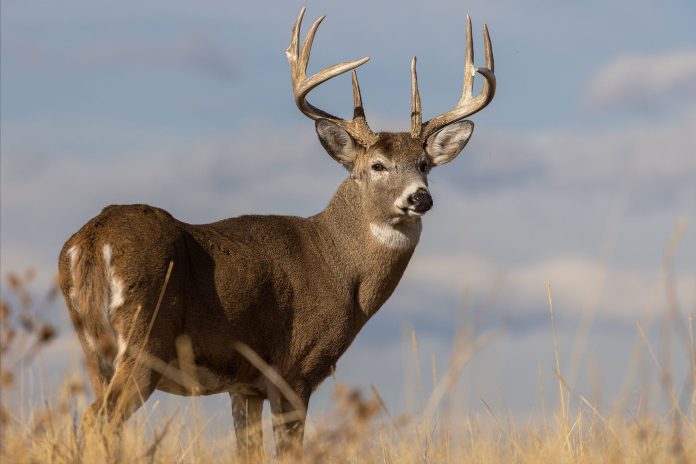Back in November, a hunter in Kentucky submitted tissue samples from a deer killed in Ballard County to the Kentucky Department of Fish & Wildlife Resources (KDFWR). Earlier today, the state wildlife agency said the 2 ½-year-old whitetail tested positive for Chronic Wasting Disease (CWD). The announcement marks the first time that the always-fatal neurological disease has been detected in the Bluegrass State.
“We at Kentucky Fish and Wildlife hoped this day would never come but we have been preparing for it,” KDFWR Commissioner Rich Storm said in a prepared statement. “Collaboration with our many partners, including hunters, taxidermists, meat processors, diagnostic testing facilities and other government agencies has enhanced our CWD surveillance efforts.”
The CWD-positive deer was killed on November 11, the opening day of Kentucky’s modern gun season. Its tissue samples were collected as part of an ongoing CWD surveillance program. The initial testing was performed at Murray State University’s Breathitt Veterinary Center, KDFWR said in its press release, and follow-up testing was conducted at the National Veterinary Services Laboratories (NVSL) in Ames, Iowa.
“[The] results … were reported to us on Wednesday [December 6] as a CWD detection,” said Dr. Christine Casey, wildlife veterinarian with KDFWR. “The combination of [an] Enzyme-Linked Immunosorbent Assay test and [an] Immunohistochemistry gives us the utmost confidence that the animal was infected with the disease.”
Since its discovery in a captive deer herd at a Colorado research facility in the late-1960s, CWD has spread to more than half of all U.S. states. Seven of those confirmed states—Missouri, Illinois, Ohio, West Virginia, Virginia, and Tennessee—share a border with Kentucky.
KDFWR said it established its CWD response plan after the disease was detected for the first time east of the Mississippi River more than two decades ago. The agency has tested more than 40,000 deer and elk for disease since then. Those tests have been conducted in every county in the state.
Related: Yellowstone National Park Announces First-Known Case of Chronic Wasting Disease
“Although CWD is always fatal to infected individual animals, by following best practices we can minimize its impact on the long-term health and sustainability of our deer herd,” Storm said. “We can continue to enjoy our deer and elk herds for many generations to come [by] helping to safeguard the many ways that they benefit the Commonwealth.”








